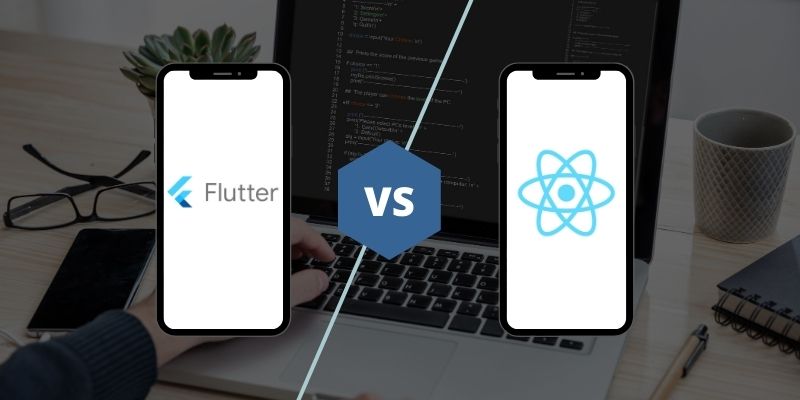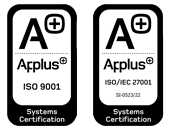Differences React Native vs Flutter, which is better?
The current phenomenon of mobile application development is a great challenge for many companies and professionals who see how the demand for apps is constantly increasing. Moreover, in recent years, different types of applications have been created, each with its own characteristics and benefits that make them more adaptable.
For the development of multiplatform applications, some frameworks and technologies are used to allow the processes to be more agile and faster while maintaining the quality of the result.
Two of the best-known frameworks for developing multiplatform applications are React Native and Flutter. Keep on reading to learn about the differences between React Native vs Flutter, their features, and their advantages!

React Native vs Flutter differences. Let’s talk about Flutter
Flutter is an open-source framework that was developed by Google and presented in 2017. Using the Dart programming language allows you to create cross-platform mobile and web applications for operating systems as different as Android, iOS, or Windows. In addition. Google frequently updates Flutter to offer the best performance.
Using Flutter for the development of a cross-platform application has advantages such as:
- Create apps with a high-performance interface adapted to the user experience.
- Applications developed with Flutter are fast.
- There is extensive documentation and a community of developers specialised in Flutter that provides extra help when working with this framework.
- It helps to create the same interface on different devices through the development of a single code.
Although Flutter is one of the most popular frameworks nowadays and its advantages attract more and more developers’ attention, Flutter also has some disadvantages, for example:
- It only allows you to create cross-platform applications. If you want to develop a native app, you will have to use another framework for it.
- It has a limited number of tools, so it is not possible to develop a fully customised app as is the case with native apps.
Find out what a digital-first strategy is and how it can help companies.
React Native vs Flutter differences. Let’s talk about React Native
React Native is one of the most popular frameworks, along with Flutter, for cross-platform app development. This open-source Javascript-based framework was developed by Facebook in 2015.
Thanks to React Native, it is possible to develop a single code that is capable of adapting to different devices and operating systems such as Android, iOS, or Windows.
Among the advantages provided by the use of React Native in the development of applications we can highlight:
- It helps to create the code faster.
- It uses Javascript, one of the best-known programming languages in the world.
- It is a framework that is constantly growing and evolving to improve the work of developers.
- Applications are created for multiple platforms from a single code.
Like Flutter, React Native has great advantages but also disadvantages. Some of them are:
- With React Native you cannot develop native apps.
- There is less customisation than in native applications because the resources supported by React Native are more limited.
- It offers a poorer interface performance compared to Flutter.
Which framework is better?
Both are great options for developing cross-platform applications, but here we are going to discuss some differences between Flutter vs React Native. These two frameworks are becoming more and more necessary for the development of mobile solutions, but which one is better? Read on to find out the differences between React Native vs Flutter.
On the one hand, one of the differences between React Native and Flutter is that the configuration of the Flutter environment is simpler than that of React Native. In addition, Flutter has better and more organised documentation that allows better structuring of the development of cross-platform applications. We also highlight that Flutter is integrated with test functions to be able to test the app that is being developed in a simpler way.
On the other hand, React Native has multiple third-party libraries through which to include different functionalities in the developed applications. In addition, another difference between React Native and Flutter is that the former is developed with Javascript, one of the most well-known languages. This means that the community of developers who provide help is larger than in Flutter.
It should also be noted that updates in Flutter are simpler, an aspect to take into account given that the maintenance and updating of applications is something fundamental.
Differences React Native vs Flutter. Conclusion
All these reasons, both pros, and cons, explain the boom that is happening in the developing world with these two frameworks.
Despite the differences between React Native and Flutter, each framework is used according to the circumstances that are needed. Therefore, we cannot clearly decide which of them is better. What we do emphasize is that both are very powerful frameworks for the development of cross-platform applications and whose future is very promising.
At ABAMobile we have been developing mobile applications of all kinds for more than 10 years. From native apps, web apps, or hybrid apps that make people’s daily tasks and companies’ production processes easier.
¡Contact our team to start developing your next mobile application!







